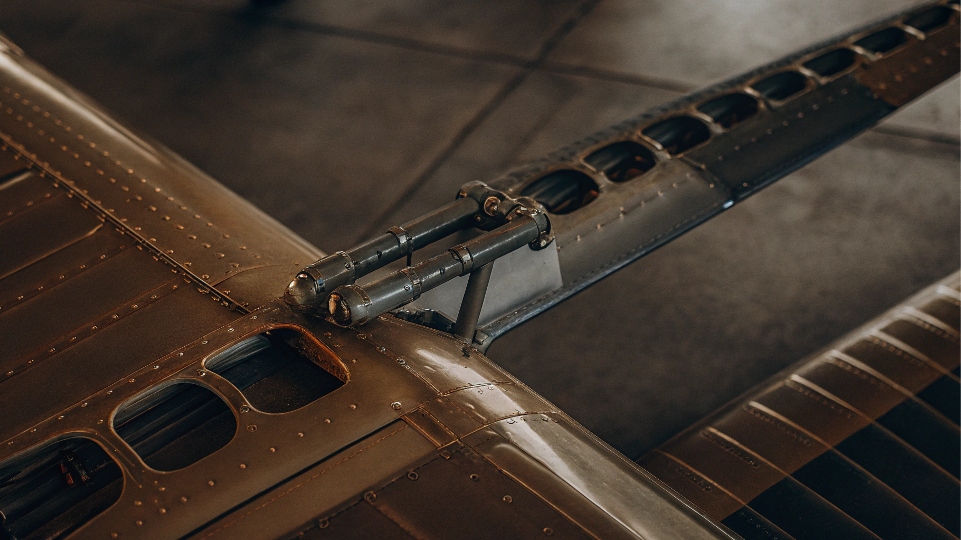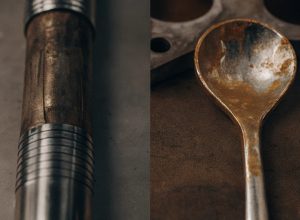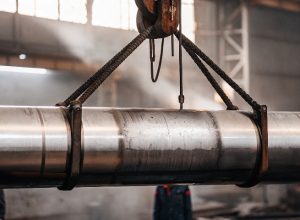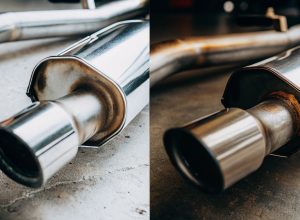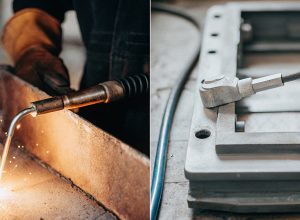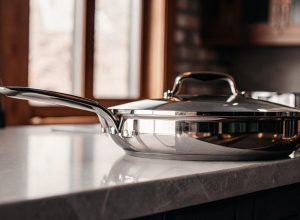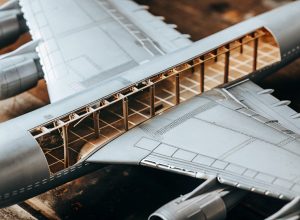Sind Sie auf der Suche nach Materialien, die sowohl leicht als auch stabil sind? Die Verwendung von Schwermetallen erhöht den Treibstoffverbrauch und schränkt die Leistung ein, aber Titan bietet die perfekte Lösung für die moderne Luftfahrt.
Titan ist für die Luftfahrtindustrie von entscheidender Bedeutung, da es ein sehr gutes Verhältnis zwischen Festigkeit und Gewicht aufweist, sehr korrosionsbeständig ist und auch bei extremen Temperaturen eingesetzt werden kann. Diese Eigenschaften machen es zu einem unverzichtbaren Werkstoff für den Bau langlebiger Flugzeugzellen, Fahrwerke und leistungsstarker Triebwerkskomponenten, die Sicherheit und Effizienz gewährleisten.
I’ve spent years working with titanium, and I see its impact firsthand. Every day, product managers like Lisa need to trust the materials they choose for critical applications. They need to know not just dass Titan ist gut, aber warum it’s the right choice for a specific part. The details matter, from the exact alloy composition to its performance under stress. To make the best decisions, you need to understand the material on a deeper level. Let’s explore the questions I hear most often from professionals like you.
Was ist der Unterschied zwischen Reintitan und Titanlegierungen?
Choosing between pure titanium and a titanium alloy can be confusing. Making the wrong choice can compromise your component’s performance or lead to unnecessary costs for your project.
Reines Titan hat eine unübertroffene Korrosionsbeständigkeit und ist sehr biokompatibel. Titanlegierungen, die mit anderen Metallen gemischt werden, bieten eine deutlich höhere Festigkeit und Ermüdungsleistung. Für Strukturteile in der Luftfahrt sind Legierungen wie Ti-6Al-4V der Standard, da sie immensen Belastungen standhalten können.
In my work, this is the first distinction I clarify. Pure titanium and titanium alloys are not interchangeable. Commercially pure (CP) titanium comes in different grades, with Grade 1 being the softest and most ductile. It’s perfect for applications where formability and corrosion resistance are key, like in some chemical processing equipment. However, it lacks the raw strength needed for a plane’s Fahrwerk1. That’s where alloys come in. By adding elements like aluminum and vanadium, we create an alloy like Ti-6Al-4V (Grade 5). This changes the metal’s internal structure, making it incredibly strong. I always tell my clients to think about the primary requirement. If you need to stop corrosion at all costs, pure titanium is great. If you need to bear heavy loads, you must use an alloy.
| Merkmal | Kommerziell reines (CP) Titan | Titanlegierung (z. B. Ti-6Al-4V) |
|---|---|---|
| Primärer Vorteil | Hervorragende Korrosionsbeständigkeit | Hohes Festigkeits-Gewichts-Verhältnis |
| Stärke | Unter | Sehr hoch |
| Gemeinsame Nutzung | Chemische Verarbeitung, Medizin | Luft- und Raumfahrt, Triebwerke, Flugzeugzellen |
| Zusammensetzung | 99%+ Titan | Titan + Aluminium, Vanadium, usw. |
Sind Titanlegierungen flexibel?
Sie benötigen ein starkes Material, befürchten aber, dass es zu starr und spröde sein könnte. Ein Material, das sich unter Belastung nicht biegen kann, könnte zu einem katastrophalen Versagen von wichtigen Komponenten in der Luftfahrt führen.
Ja, Titanlegierungen sind flexibel, aber im technischen Sinne. Sie weisen eine hohe Duktilität und ausgezeichnete Ermüdungsfestigkeit2Das bedeutet, dass sie sich leicht biegen können, ohne zu brechen, und wiederholten Belastungszyklen standhalten. Diese Eigenschaft ist für Flugzeugtragflächen und Triebwerksschaufeln, die ständigen Vibrationen ausgesetzt sind, von entscheidender Bedeutung.
When we talk about "flexibility" in materials science, we often mean ductility and fatigue life. Ductility is the ability of a material to deform under tensile stress without fracturing. Think of an airplane wing. During turbulence, it needs to flex up and down to absorb the energy. A brittle material would simply crack under that load. Titanium alloys, however, have the ductility to handle this movement. More importantly, they have a high fatigue life. This means they can endure millions of these stress cycles over the aircraft’s lifetime without weakening. I remember working on a project for turbine engine blades. The customer’s primary concern wasn’t just strength at high temperatures, but the ability to handle constant, high-frequency vibrations for thousands of flight hours. We recommended a specific heat treatment for the alloy to maximize its fatigue resistance. This kind of engineered flexibility is what makes titanium alloys irreplaceable in aerospace.
Warum ist eine Titanlegierung stärker als Titan?
It seems counterintuitive that adding other materials can make a strong metal like titanium even stronger. Not understanding the science behind this can lead you to misjudge a material’s true capabilities.
Titanlegierungen sind fester als reines Titan, weil die hinzugefügten Elemente, wie Aluminium und Vanadium, die innere Kristallstruktur des Metalls verstärken. Diese neuen Atome stören die gleichmäßigen Atomschichten, so dass es für sie viel schwieriger ist, unter Druck aneinander vorbeizugleiten, was die Gesamtfestigkeit erhöht.
The secret to an alloy’s strength lies in its microstructure. Think of pure titanium as a stack of perfectly aligned paper sheets. It is relatively easy to slide them apart. When we create an alloy, we are essentially adding microscopic "pins" between these sheets. Alloying elements like aluminum stabilize one type of crystal structure (alpha phase), while elements like vanadium stabilize another (beta phase). The most common aerospace alloy, Ti-6Al-4V, is an "alpha-beta" alloy. This combination creates a complex, interlocking internal structure that is incredibly resistant to deformation. In our R&D lab, we analyze these structures under powerful microscopes. By carefully controlling the alloy composition and the subsequent heat treatment process, we can fine-tune this microstructure. We can make the alloy stronger, more heat-resistant, or more fatigue-resistant to meet the extremely precise demands of our aerospace clients. It’s this control at the atomic level that unlocks titanium’s full potential.
Was sind die Nachteile von Titanlegierungen?
Titanlegierungen klingen wie ein perfektes Material, aber Sie wissen, dass es immer Kompromisse gibt. Das Ignorieren der Nachteile kann zu Budgetüberschreitungen und Produktionsverzögerungen bei Ihrem Projekt führen.
The two main disadvantages of titanium alloys are their high cost and their difficulty in machining. The extraction and purification process is complex and energy-intensive. Furthermore, the material’s strength and poor heat conductivity make it very tough to cut and shape, requiring special tools.
Ich spreche mit meinen Kunden immer offen über diese Herausforderungen. Die hohen Kosten beginnen ganz am Anfang. Die Gewinnung von Titan aus seinem Erz ist ein mehrstufiger, energieaufwändiger Prozess. Er ist viel komplexer als die Herstellung von Stahl. Diese hohen Anfangskosten für das Rohmaterial sind die erste Hürde. Die zweite Herausforderung ist die Bearbeitbarkeit. Titanlegierungen sind aus mehreren Gründen schwer zu bearbeiten. Sie haben eine geringe Wärmeleitfähigkeit, was bedeutet, dass sich die Wärme an der Schneidstelle staut, anstatt abgeleitet zu werden. Dies kann sowohl das Schneidwerkzeug als auch das Bauteil selbst beschädigen. Außerdem sind sie bei hohen Temperaturen chemisch reaktiv, was dazu führen kann, dass das Material mit dem Werkzeug verschweißt. In unserem Werk haben wir viel in spezielle Anlagen und Verfahren investiert, um diese Probleme zu lösen. Wir verwenden fortschrittliche Kühlsysteme und spezielle Schnittgeschwindigkeiten, um die Hitze zu kontrollieren. Auch wenn die Rohstoffkosten eine Tatsache sind, trägt unser optimierter Produktionsfluss dazu bei, die Kosten für das Endprodukt zu kontrollieren, was es für Kunden wie Lisa zu einer realistischen Wahl macht.
| Herausforderung | Grundlegende Ursache | Unsere Lösung |
|---|---|---|
| Hohe Kosten | Aufwendige, energieintensive Gewinnung (Kroll-Prozess3) | Optimierter Produktionsfluss, reduzierter Materialabfall |
| Schwierige Bearbeitungen | Geringe Wärmeleitfähigkeit, chemische Reaktivität | Spezialisierte CNC-Werkzeuge, moderne Kühlsysteme4 |
Schlussfolgerung
Titanium’s strength and low weight make it vital for aviation. Understanding the key differences between pure and alloyed titanium, and their benefits and challenges, helps you choose wisely.
-
Erforschen Sie die Materialien, die Sicherheit und Leistung in kritischen Fahrwerkskomponenten gewährleisten. ↩
-
Erfahren Sie mehr über Ermüdungsfestigkeit, um die Langlebigkeit und Sicherheit von Flugzeugkomponenten zu gewährleisten. ↩
-
Lernen Sie den Kroll-Prozess kennen, um die Komplexität der Titanproduktion zu verstehen. ↩
-
Erfahren Sie, wie Kühlsysteme die Effizienz der Bearbeitung und die Standzeit der Werkzeuge bei der Bearbeitung von Titan verbessern. ↩

